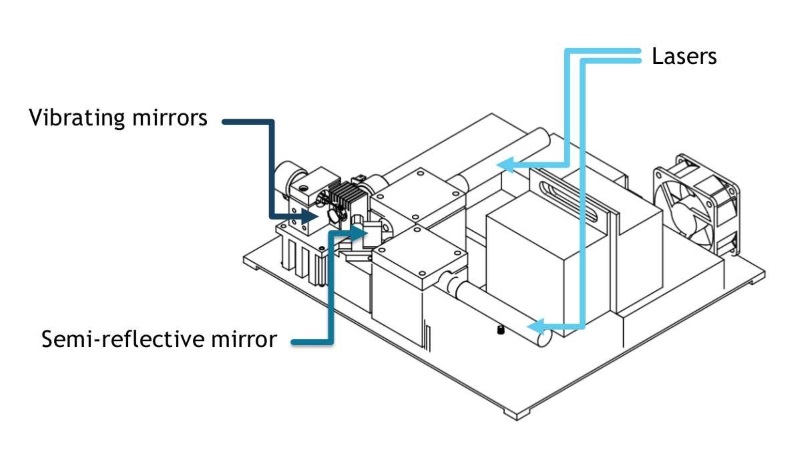In order to participate to a various outreach events, NEWS-G developed a glass sphere detector to show the functioning of the SPCs. However, because all the interactions happening in the detectors are too small to be visible to the naked eye, NEWS-G team at Queen’s University also developed a laser display showing the inner workings of the SPCs. This system is able to demonstrate five different kinds of particle interactions from alpha particles, muons, beta particles, gamma photons, and WIMPs (Dark Matter).
The Display
The laser depicts the collisions of particles and gas atoms in the detector, and the subsequent creation of electrons (represented as small dots). The charged particles (alphas, muons, and betas) leave a track (represented as a continuous line behind the particles) of collisions in their wake, whereas the neutral particles (gammas and WIMPs) only collide with gas atoms once and create a few electrons, without leaving a track.

The electrons (the small dots that are created) drift toward the sensor at the center of the detector. Upon reaching the sensor, the electrical pulse they induce is also displayed, going down the rod as the electrons do.
Hardware
The system works by pointing two lasers at a semi-reflective blade to align them on a pair of very quickly moving mirrors. By controlling the vibration of the mirrors, the reflected laser light is transformed into a real-life animated display, depicting the detector vessel, sensor rod, incoming particle, electrons created by collisions, and the pulses induced by these electrons. The lasers and mirrors are controlled by an Arduino micro-controller, programmable from any computer. The entire system is very compact, which makes transportation and installation very easy for outreach events.

 Queen's Physics Department
Queen's Physics Department